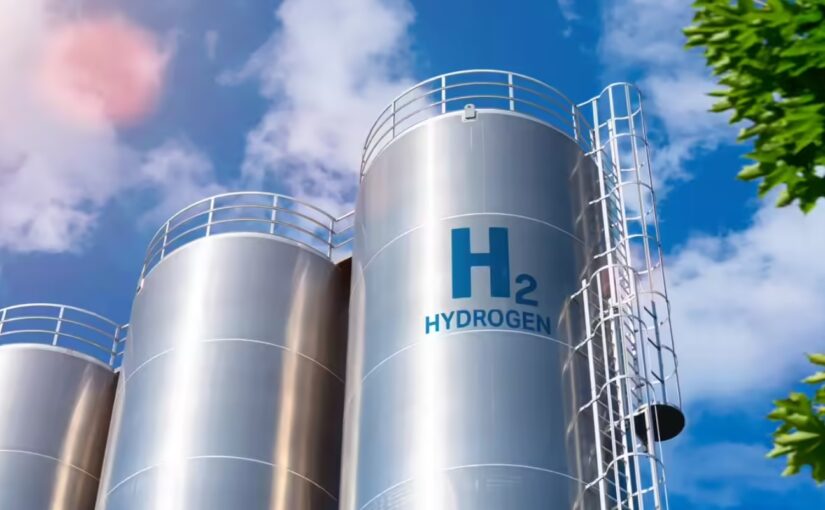In the arid salt plains of Kutch, Gujarat, a quiet revolution is underway. Amid solar panels shimmering under the desert sun, India has commissioned its first off-grid 5 MW green hydrogen plant—powered entirely by renewable energy and battery storage. It’s not just a technological feat; it’s a signal flare to the world: India is no longer playing catch-up in the clean energy race. It’s changing the very game.
Hydrogen, the universe’s most abundant element, has long been hailed as the fuel of the future. But only now—thanks to plunging renewable energy costs and climate urgency—is it becoming the fuel of the present. And India, with its vast solar potential and growing industrial appetite, is positioning itself as a global hydrogen powerhouse.
Launched in 2023, India’s National Green Hydrogen Mission aims to produce 5 million metric tonnes of green hydrogen annually by 2030, reduce CO₂ emissions by 50 million tonnes per year, and create over 600,000 jobs. With an initial outlay of ₹19,744 crore, the mission is not just about energy—it’s about economic transformation.
“India has the potential to become the Saudi Arabia of green hydrogen,” said Dr. Fatih Birol, Executive Director of the International Energy Agency, during a 2024 roundtable in New Delhi. “Its combination of low-cost renewables and engineering talent is unmatched.”
India currently produces around 6.5 million tonnes of hydrogen annually, mostly grey hydrogen derived from fossil fuels. The pivot to green hydrogen—produced via electrolysis using renewable electricity—is both an environmental and economic imperative.
According to a 2025 policy brief by the French Institute of International Relations (IFRI), India aims to slash green hydrogen production costs from €4.84–6.11/kg to €1.37/kg by 2030. This would make it globally competitive, especially in export markets like Europe and Japan, which are aggressively decarbonizing.
To achieve this, India is investing in domestic electrolyzer manufacturing, offering production-linked incentives (PLIs), and waiving inter-state transmission charges for renewable energy used in hydrogen production.
In June 2025, Adani New Industries Ltd. (ANIL) commissioned India’s first off-grid green hydrogen pilot plant in Kutch. Powered entirely by solar energy and integrated with a battery energy storage system, the plant features a fully automated, closed-loop electrolyzer that adjusts dynamically to real-time energy inputs.
“This is not just a pilot—it’s a proof of concept for decentralized, renewable-powered hydrogen production,” said Gautam Adani in a statement. “It sets a benchmark for industrial decarbonization in hard-to-abate sectors.”
The plant is a precursor to ANIL’s upcoming Green Hydrogen Hub in Mundra, which aims to produce green ammonia, methanol, and sustainable aviation fuel for both domestic and global markets.
Green hydrogen is not just about clean fuel—it’s about reimagining India’s industrial backbone. Sectors like steel, fertilizers, and refining—responsible for nearly 30% of India’s emissions—are now exploring hydrogen-based alternatives.
“Green hydrogen is the missing link in India’s decarbonization puzzle,” said Dr. Ajay Mathur, Director General of the International Solar Alliance. “It allows us to clean up sectors that electricity alone cannot reach.”
Indian Oil Corporation has launched a pilot green hydrogen plant at its Mathura refinery, while NTPC is developing hydrogen-based energy storage systems. Reliance Industries is planning one of the world’s largest green hydrogen plants in Jamnagar, backed by its New Energy division.
India’s ambitions don’t stop at domestic consumption. With global hydrogen demand projected to reach 530 million tonnes by 2050, India is eyeing a major share of the export pie.
The India-Middle East-Europe Economic Corridor (IMEC), announced at the G20 Summit, is expected to streamline hydrogen exports to Europe via the Gulf. Meanwhile, partnerships with countries like Japan, Germany, and Australia are helping India align its hydrogen standards with global norms.
“Hydrogen diplomacy is the new oil diplomacy,” said economist Gita Gopinath at the 2025 India Energy Forum. “And India is playing it smart—building alliances, securing markets, and setting the rules.”
Despite the momentum, challenges remain. Electrolyzer costs are still high, water scarcity is a concern in arid regions, and infrastructure for storage and transport is underdeveloped. Moreover, the lack of long-term offtake agreements and carbon pricing mechanisms makes it hard for producers to scale.
A 2024 report by the Observer Research Foundation (ORF) warns that without demand-side mandates and financing instruments, India’s hydrogen economy could stall. The report calls for blended finance models, safety regulations, and a robust measurement and verification system.
But the government appears undeterred. “We scaled solar from 3 GW to over 100 GW in a decade,” said Union Power Minister R.K. Singh. “We will do the same with hydrogen.”
The green hydrogen economy is expected to contribute $12–15 billion to India’s GDP by 2030, create thousands of MSME opportunities, and reduce energy import bills by billions. It also aligns with India’s twin goals: energy independence by 2047 and net-zero emissions by 2070.
In the words of Nobel laureate economist Amartya Sen, “Development is freedom.” Green hydrogen offers India the freedom to grow without choking on its own emissions.
India’s hydrogen push is not just a climate strategy—it’s an economic doctrine. It’s about building a new industrial base, creating jobs, securing energy, and asserting global leadership. In doing so, India is not following the hydrogen playbook—it’s rewriting it.
As the sun sets over the salt flats of Kutch, the hum of electrolyzers powered by solar energy tells a quiet but powerful story. The future is here. And it smells not of oil, but of water vapor.
![]()

